It is December!! WOW, time flies when you are busy! In seventeen short days we will be in Dutch Harbor ready to depart for home. We are in the Bering Sea now...this is where we will spend the remainder of our time. We have many stations planned, so hopefully the weather cooperates!
Yesterday, we had nearly 6 hours of daylight. I was able to spend some time on the Bridge. What got me to the Bridge? A page from David, the US Fish & Wildlife Marine Observer, of course...WALRUS!
While on the Bridge, I saw two flocks of spectacled eiders and 5 walruses. It was so cool to be able to see them in the wild. The walrus were in the little “ponds” of open water in the ice. Given the choice to watch them myself, or try to take a photo...I opted to just enjoy the moment. They were quick to bob in and out of the water!
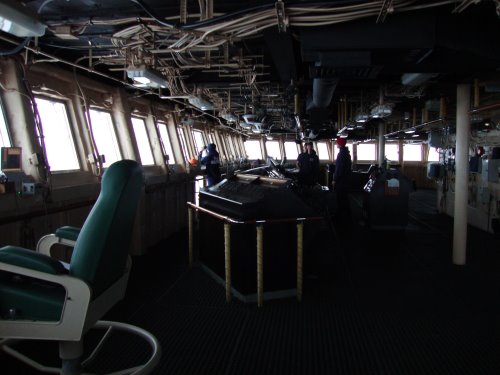
The Spectacled EiderSpectacled Eiders are diving ducks that live in the arctic year round. Click here to read more about the spectacled eider. is a large sea duck whose species is classified as threatened. Their name comes from the eye patches that are especially dominant in the male. They spend their spring and summer on coastal tundra and during the winter they move far offshore in waters up to 65 meters deep where they gather in flocks in openings of nearly continuous ice. That is EXACTLY where we saw them!
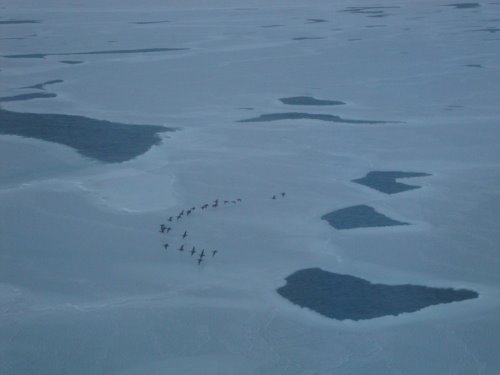
Walruses are marine mammals whose most prominent feature is large tusks. These tusks are used to get them onto the ice and to maintain their holes in the ice. They also have a mat of stiff bristles called vibrissae that gives them the "whiskered look". Male walrus can weigh up to 3,700 pounds!
I also spent some time talking to the Officer of the Day, LTJG Weston. The Officer of the Day is the person responsible for driving the ship. We were transiting between 2 Science stations that were 50 nautical miles apart, so the ship was actually on auto-pilot when I was on the Bridge. If course corrections need to be made on auto-pilot, this very little wheel is used to dial in the numbers.
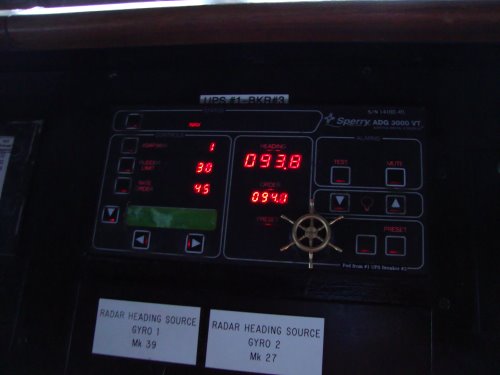
Of course, there is a larger wheel onboard, but it is not used as often as the smaller auto-pilot wheel. As we approach the Science station, LTJG Weston will take Healy off of auto-pilot mode and manuever her into position for our Science station. He said that his job can be stressful at times but that he feels very well prepared for the orders that he gives and the tasks he must carry out.
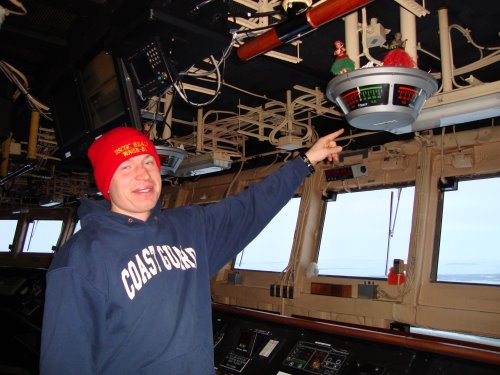
One of the things that we learned while on our engineering tour is that all of the pipes on the ship are color-coded. This helps in easily identifying what substance is in a pipe. This is especially important when dealing with leaks.
Purple pipes carry JP5 aviation fuel for helicopter operations. Even though there are not helicopters stationed on Healy, there are usually flight operations on every deployment. They need to have helicopter fuel on-hand and ready.
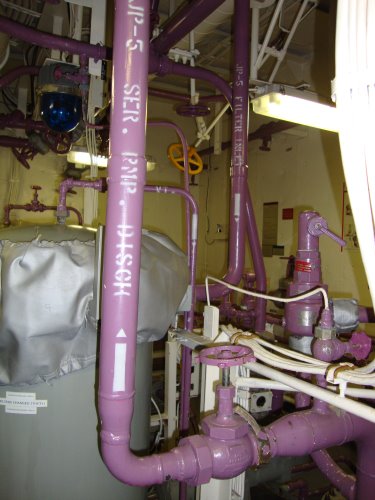
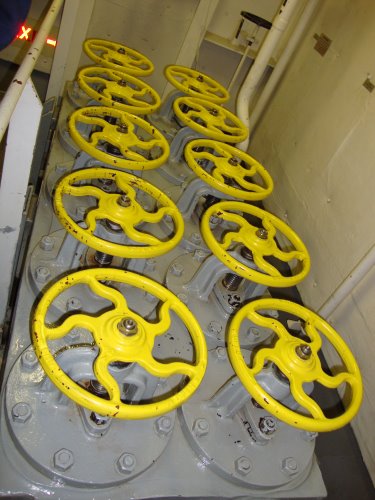
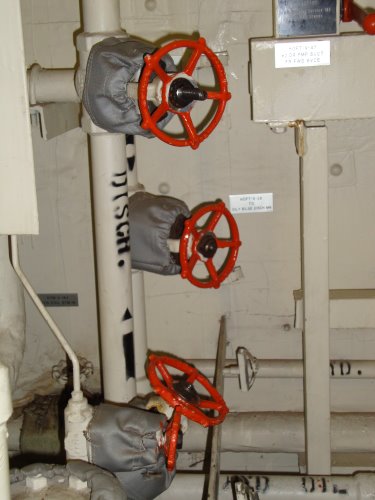
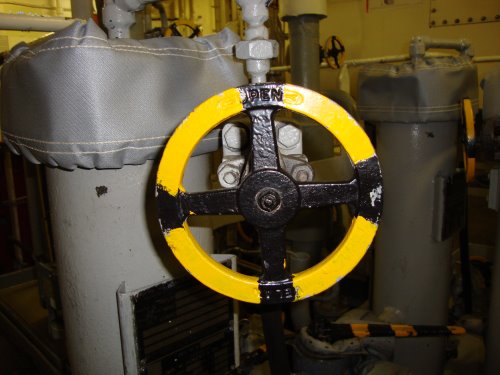
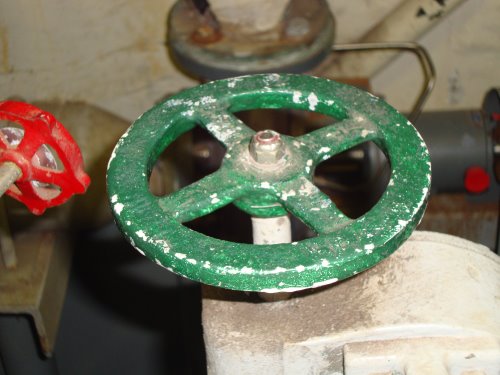

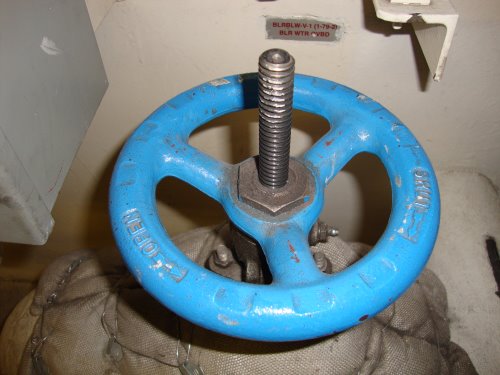

The electric lines are also color-coded. Orange lines carry 6,600 Volts, yellow lines carry 4,500 Volts and black lines carry 450 Volts.
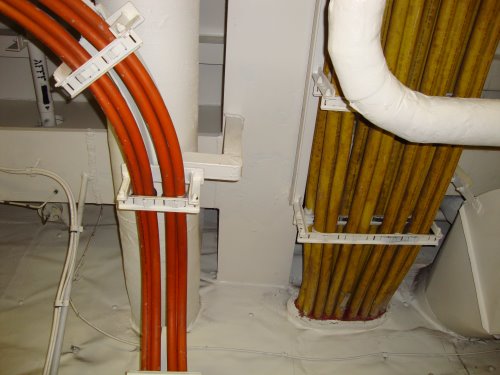
We actually saw blue skies yesterday...what a gorgeous view!
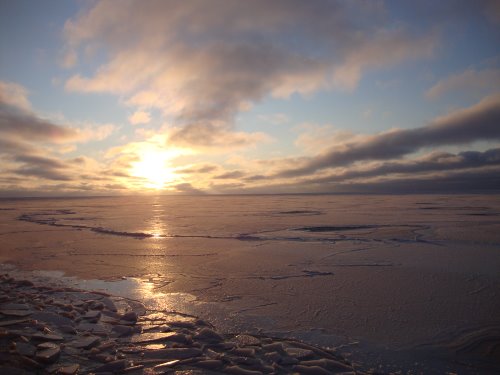
Question of the Day
Explain the function of vibrissae.
Stay tuned as we continue our exciting voyage on the USCG Cutter Healy. Until then...
“Live as if you were to die tomorrow. Learn as if you were to live forever.” - Mohandas Gandhi


Comments